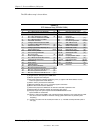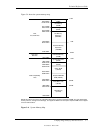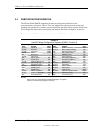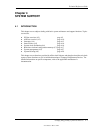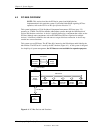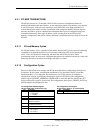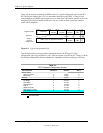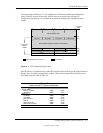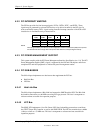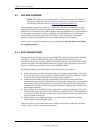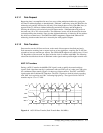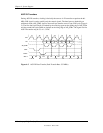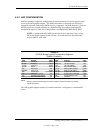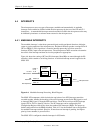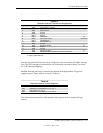
Chapter 4 System Support
Compaq iPAQ Family of Internet Devices
First Edition - March 2000
4-6
4.2.2 PCI INTERRUPT MAPPING
The PCI bus provides for four interrupt signals; INTA-, INTB-, INTC-, and INTD-. These
signals may be generated by on-board PCI devices or by devices installed in the PCI slots. In
order to minimize latency, INTx- signal routing from the interrupt controller of the ICH to PCI
slots/devices is distributed evenly as shown below:
Intr.
Cntlr.
AGP
Cntlr.
Audio
Cntlr.
NIC I/F USB I/F
INTA- INTA- -- -- --
INTB- INTB- INTB- -- --
INTC------- --
INTD- -- -- INTA- INTD-
NOTE:
Interrupts generated by PCI devices can be configured to share the standard AT (IRQn) interrupt lines.
Two devices that share a single PCI interrupt must also share the corresponding AT interrupt.
4.2.3 PCI POWER MANAGEMENT SUPPORT
This system complies with the PCI Power Management Interface Specification (rev 1.0). The PCI
Power Management Enable (PME-) signal is supported by the 810 and 820 chipsets and allows
compliant PCI and AGP peripherals to initiate the power management routine.
4.2.4 PCI SUB-BUSSES
The 810e chipset implements two data busses that supplement the PCI bus:
♦
Hub Link Bus
♦
LPC Bus
4.2.4.1 Hub Link Bus
The 810e chipset implements a Hub Link bus between the GMCH and the ICH. The Hub Link
bus handles transactions at a 66-MHz rate using PCI-type protocol. This bus is transparent to
software and not accessible for expansion purposes.
4.2.4.2 LPC Bus
The 82801 ICH implements a Low Pin Count (LPC) bus for handling transactions to and from
the 47B277 Super I/O Controller as well as the 82802 FWH. The LPC bus transfers data a nibble
(4 bits) at a time at a 33-MHz rate. This bus is transparent to software and not accessible for
expansion purposes.



